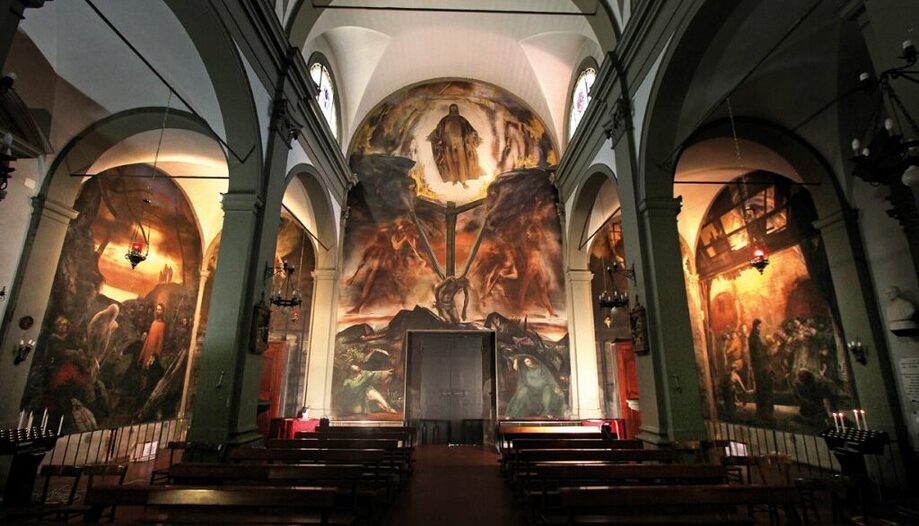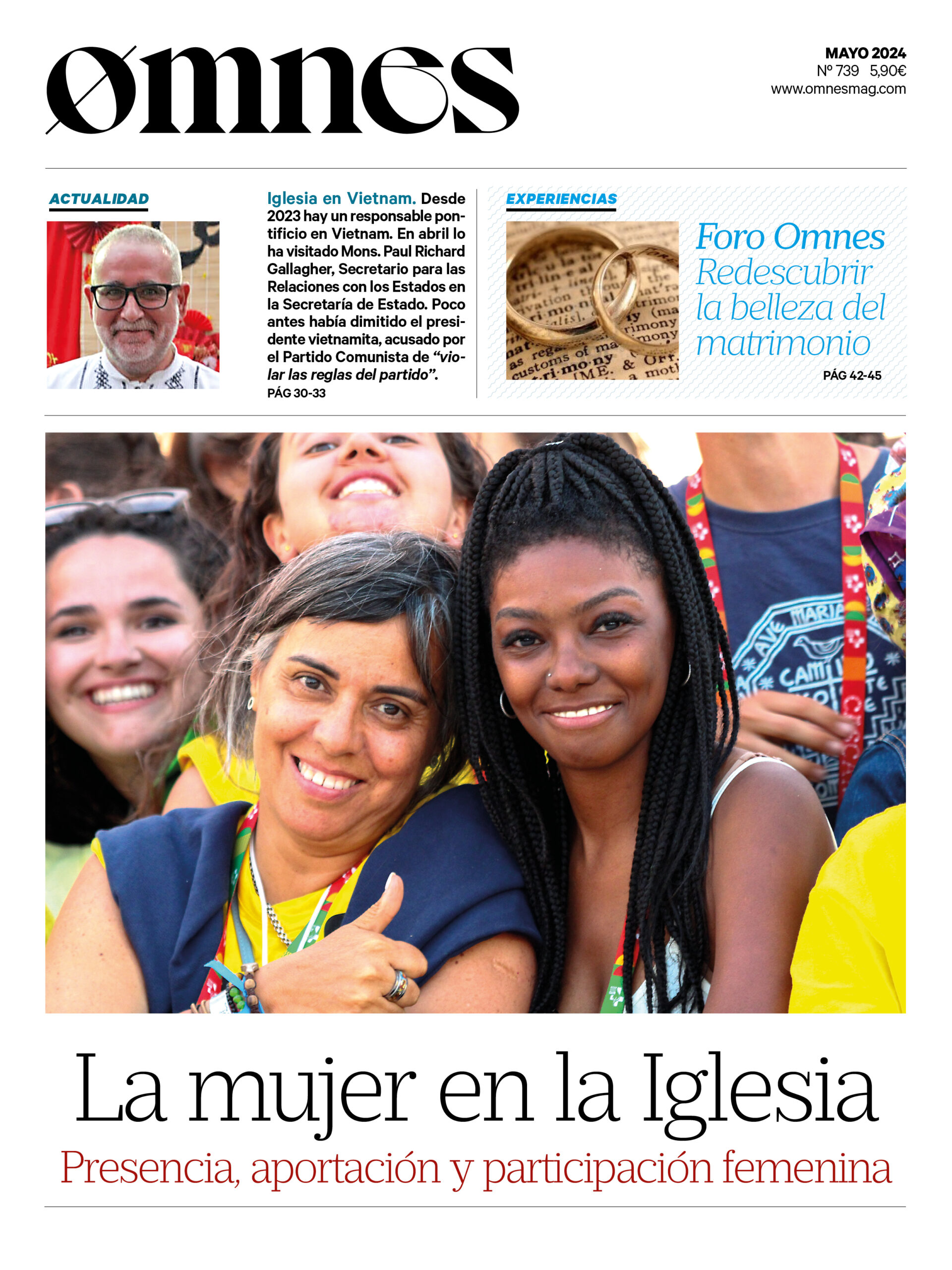In the first article of this section I chose to write about the art of Lucio Fontana, a well-known Italian-Argentine artist who has created numerous works of sacred art, including three Stations of the Cross that can be counted among the works of contemporary sacred art in terms of style and execution. The informal style, although the figures are recognizable, the essentiality of the colors in two of the three Stations of the Cross (the white and the terracotta), the sketchy form, one might say sketchy, with powerful plastic effects and, in a certain way, new, compared to the past, make Fontana's work remarkable.
Passionate about drawing
The second artist I have chosen to present, Pietro Annigoni, is situated at the antipodes of Fontana. The choice is not random, because with it I want to underline the possible variety of approaches. Pietro Annigoni (June 7, 1910, Milan - October 28, 1988, Florence) is a painter who criticized the modernism of the century in which he lived, and forcefully claimed, with originality and creative force, the possibility of making an original and fully twentieth-century art, even in the wake of the Western figurative tradition.
The second of three brothers, his father Ricciardo was an engineer from Milan who moved to Florence for work, his mother Therese was an American from San Francisco, but of Ligurian origin. Pietro had a passion for drawing from an early age. And as fate would have it, in Florence this passion was kindled even more when he came into contact with the artistic tradition of the city, which has always been based on drawing. On September 22, 1950, on his return from the Venice Biennale, Annigoni noted in his diary: "In the Mexican pavilion, remarkable brute force, but force. Fauvism, cubism, abstractivism... Yes -I understand-, overcoming limits and conclusions, hopes placed in the freshness of new incentives, eagerness to reach greater lyricism. Result: sensual decorativism, destined in a short time to be diluted and annihilated. It would be important to say new and interesting things with a lively and communicative conventional language".
At the school of the great
That is what it is all about, to say new and interesting things with a lively and communicative conventional language. In sacred art, it could be objected that there is no need to say new things, because Christian sacred art must say what we already know, the content of faith, which is immutable. Of course this is so, but on one condition, namely, that by re-proposing the good news (which is not by chance new) we also succeed in making its eternal and shattering novelty perceptible. Language can also be "conventional", but it must nevertheless be "living and communicative".
I believe that Annigoni has shown, with his artistic work, to have done just that, that is, to use the figurative language of Western art, educated in the school of the greats of the past, to produce something new and totally original, which before the twentieth century could not even have been imagined. The example is in a rural parish church in Ponte Buggianese, in the province of Pistoia, where the master Annigoni, together with his pupils - that is, a group of student-friends - realized from July 1967 an impressive cycle of frescoes.
If Fontana, with his "White Way of the Cross", also innovated technically the art of glazed ceramics, looking for new effects, Annigoni chooses instead an ancient and complex pictorial technique such as fresco painting, which requires slow procedures, much reflection and preparation, because the execution must be free of corrections. The result, however, is not "neo-whatever", even if it includes references and quotations from works of the past.
The "Descent from the Cross" in Florence: a new result
Before going into some of the works of the cycle, I want to take a step back, and return to a work that dates back to the period 1937-1941, in the convent of San Marco in Florence. It is a Descent of Christ from the Cross, in the central scene, and two lunettes, respectively with Adam and Eve, and the killing of Abel by Cain, and two pairs of saints on either side of the deposed Christ (Saint Antoninus Pierozzi and Saint Catherine of Siena, on one side, and Saint Thomas Aquinas and Jerome Savonarola, on the other).
Let us read again in Annigoni's diary: "I began the fresco of St. Mark with the Descent from the Cross (...) For the first part of the work I decided to have a really dead body for the figure of Christ, so I consulted the anatomy professor of a hospital and obtained permission to choose in the cold room. There were four or five, practically all skeletons.
I took the only one that could serve my purpose and tried to hang it from a ladder, but it was too rigid (...). In the end I had to use a live model". Annigoni wants to paint from life, he uses models, he reconstructs the scene, but the result is new. The dead Christ, livid, disarticulated, hangs already detached from the nails. He is supported by a sheet that passes under his arms. No one can see who is holding him. There are no stairs around. It is a "communicative" vision and the ancient language is "alive".
Contemplating this work by Annigoni, one is spontaneously reminded of Annigoni's theology of the body. St. John Paul IIThe reading of anthropological theology seeks in corporeality the mystery of Christ, who assumed the flesh that was created in the image and likeness of God, to the point that it can be affirmed with certainty that Jesus, before becoming incarnate, was mysteriously the original and original model of Adam and Eve.
"The body, in fact, and only the body," said John Paul II on February 20, 1980, at the General Audience (later collected in the volume "Man and Woman Created Them"), "is capable of making visible what is invisible: the spiritual and the divine. He was created to transfer to the visible reality of the world the mystery hidden from eternity in God, and thus to be a sign of it". The corporeality, through its "visible" masculinity and femininity, according to John Paul II, thus constitutes a sacrament understood as a sign that effectively transmits to the visible world the invisible mystery hidden in God.
It is clear that Christian sacred art has and will always have among its distinctive elements the artistic reflection on the incarnation, on corporeality, on the dimension of true man-true God, in which humanity unveils (reveals, precisely) the divinity.
Three outstanding frescoes in Ponte Buggianese
Let us now return to the Ponte Buggianese to stop at three particularly significant frescoes.
The Descent and Resurrection of Christ, from 1967, on the back wall of the church, is a fresco that exceeds 90 square meters. The composition is highly original: in the center is Christ deposed, exactly as seen in the convent of St. Mark, but here we see that there are two angels on either side, holding him with a sheet; on the cross, Jesus appears resurrected in an irregular and very white mandorla. There is an enormous contrast between the dead man hanging and the risen one, who is also physically larger, upright, moving, with open arms showing the wounds. Below, on both sides of the door, in an apocalyptic setting, Adam and Eve contemplate the scene. Above them, angels sound the trumpets of judgment.
The second scene I would like to highlight is in the first chapel as you enter on the right, and represents the resurrection of Lazarus, painted in 1977. Here too there is a lot of strength and originality in the composition. Christ has on his right and left Martha and Mary (one of the two holds her nose because of the stench of the corpse), others are in the background, as witnesses, and three stand on a nearby hill and watch. Christ has his gaze fixed on the mummy walking towards him. In this, as in the other frescoes, Annigoni's ability to execute portraits and to make each person in the scene experience specific emotions, which in this case are marked by wonder, awe, and amazement, is striking.
Annigoni devoted much time to portraiture, and at one point in his career he produced works for well-known personalities, including the young Queen Elizabeth II, John Fitzgerald Kennedy, John XXIII, the Shah of Persia Reza Pahlevi and the Empress Farah Diba. Annigoni alternated these illustrious portraits with portraits of poor, destitute people, such as the 1945 Cinciarda, now in the Villa Bardini museum in Florence, or the 1972 fresco entitled "Charity for Mercy" in Florence, in which a brother of Mercy carries a wounded man on his shoulders using the "zana", a wicker basket with a seat.
The last work of the Ponte Buggianese cycle that I want to mention for its originality is the scene of Jesus in the Garden of Gethsemane. It is a fresco from 1979. Christ is in anguish, he seems lost and alone. In front of him there is a gigantic angel with outstretched wings assisting him without his interaction. In the foreground, with flashes worthy of Mantegna, are the three sleeping disciples. Once again, Annigoni demonstrates that it is possible to "say new and interesting things with a lively and communicative conventional language".













